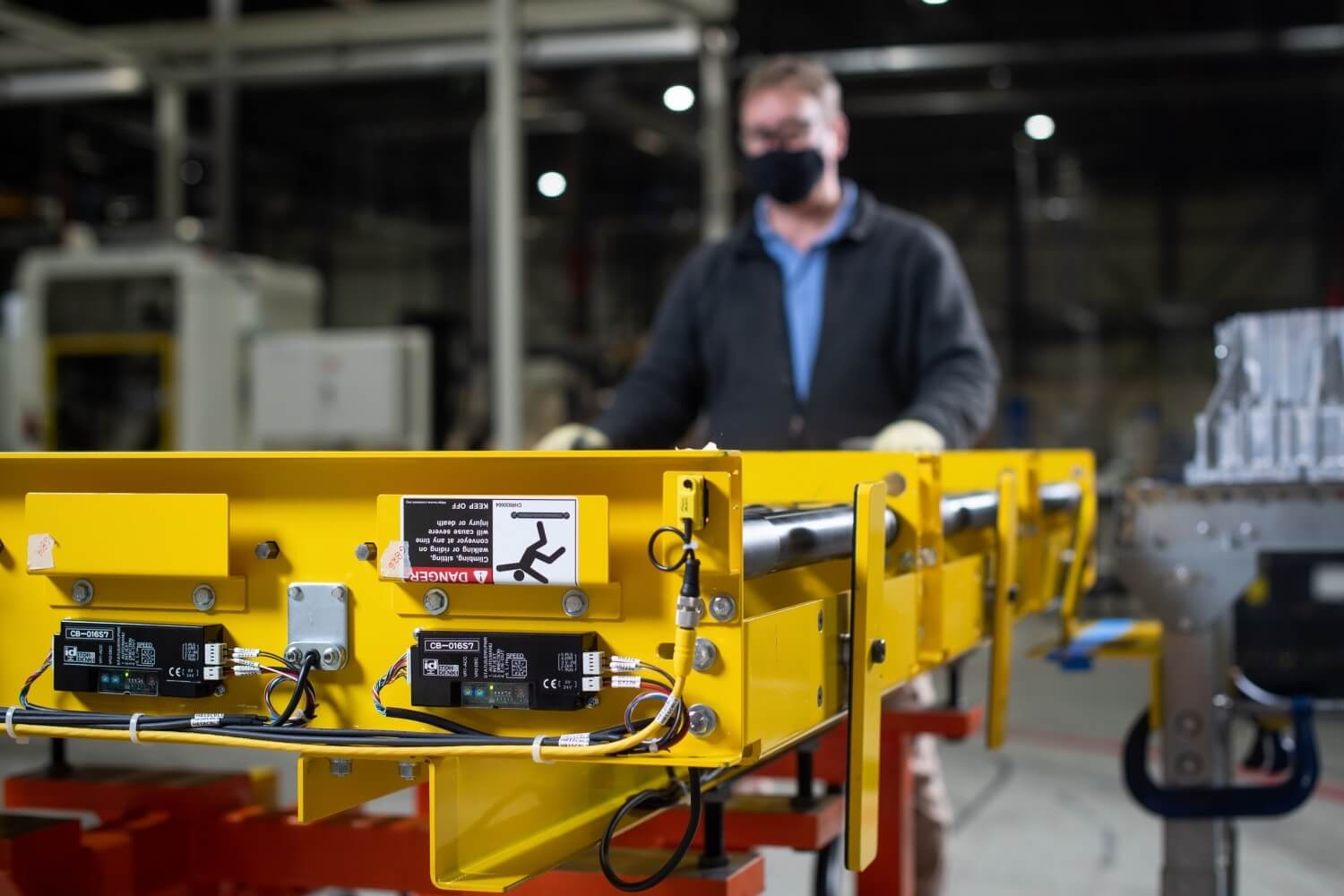This is an excerpt written by Automation World, featuring Dave Girard, Applications Director for RedViking. A leading jet engine manufacturer—aiming to quadruple production capacity in a two-year period—got a state-of-the-art assembly line that not only surpassed the goal but improved quality as well. A leading aerospace manufacturer was in need of a state-of-the-art assembly solution to meet its rapidly increasing production demands. Forecasted sales for its new jet engine greatly exceeded its current production capabilities. To meet these future demands, the manufacturer was challenged to increase its production capacity by more than 400 percent within the next two years. The manufacturer’s assembly process was labor-intensive and time-consuming. Combined with poor ergonomics, it was very difficult for the assembly mechanics to increase production numbers on their own. The original jet engine manual assembly process took teams of skilled mechanics working long hours over a period of four or five days to complete even a single engine module set. One of the key assembly operations for a particular engine module was taking mechanics up to two days to complete because of part alignment, heating, pressing, cooling, gauging and inspection. The manual process was difficult and time-consuming because employees had to use ladders and platforms to reach top assemblies, crawl on their backs to reach the bottom assemblies, and use multiple dangerous overhead lift assists. With future sales volumes rising and long-term production needs rapidly increasing, this manufacturer knew it was time for change.
Automating the Line
To begin its journey, the jet engine manufacturer started looking for a U.S.-based supplier to partner with to create a system that would not just improve its production but would truly revolutionize how it builds its market-leading jet engine. After approaching automation vendors in the automotive industry as well as peers from other industries, the manufacturer chose to partner with RedViking. We designed, built, installed and brought to production the first-of-its-kind automated aerospace jet engine assembly system. This new state-of-the-art system not only increased our customer’s production throughput from six engine modules per month to 60, but was also responsible for reducing engine-to-engine assembly variability to values that were once deemed unachievable. To understand the starting point, we conducted a comprehensive, two-month engineering study to analyze all the existing processes. The study included analysis of each step in the engine module assembly process to identify which processes merited automation. Our philosophy is that every piece of automation needs to earn its place on the line. The customer’s goals included a linear flow assembly line, creating a more efficient assembly pattern for mechanics.
The new system not only increased throughput from six engine modules per month to 60, but was also responsible for reducing engine-to-engine assembly variability to values that were once deemed unachievable.
Our team designed a linear flow assembly line comprised of seven individual module assembly cells, including three multi-process premium stations and 22 semi-automated workstations. The three automated premium stations consist of a vertical-style multi-part align, heat, press and stack assembly station; a multi-position press, torque and stretch assembly station; and a multi-process, multi-part marriage assembly station. The RedViking jet engine module assembly system significantly reduced the amount of time and resources required to build the various jet engine modules. A manual process that once took teams of people several days to complete is now accomplished in just hours with single operators. Proper tools and parts available for each mechanic at the correct time and in the correct location reduced material handling complexity and assured optimal ergonomics. We had the unique challenge of designing an assembly automation system that could handle a variety of jet engine component sizes and weights—all of which are extremely expensive, complicated, heavy and cumbersome to handle. In addition, many of the assembly processes required parts to be heated and cooled to specific temperatures, then pressed to specific forces. RedViking developed and implemented a mobile conveyance solution to load, unload and transfer parts. Used in conjunction with a servo-controlled overhead part manipulator, operators are now able to manage part transfers easily and continuously throughout the assembly cell. The systems work together gracefully to create the first-of-its-kind automated jet engine assembly line, which is revolutionary for the aerospace industry.





